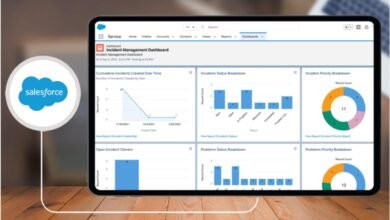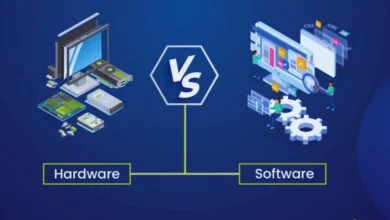ChemDraw Software for Accurate Chemical Structure Drawing

ChemDraw software has been an industry and academia brand for over 30 years. It produces clean, publication-quality chemical diagrams that journals and patent offices normally require. From drafting a drug synthesis pathway to showing aromaticity in a teaching setting, ChemDraw delivers accuracy with a professional appearance.
Researchers use it to speed up chemical communication. The time it saves in simplifying the drawing of chemicals reduces mistakes in documentation. It also comes with interfaces for other software like Reaxys, SciFinder, and PubChem, making it a hub in digital chemistry workflows.
ChemDraw for Education and Professional Use
One of ChemDraw’s less visible but equally powerful features is its use as an educational tool. Professors use it during lectures to draw mechanisms live, and it is used by students to execute homework and do virtual lab experiments. It instructs users about fundamental concepts interactively using electron flow arrows and stereochemical notations.
Pharmaceutical and agrochemical professionals use ChemDraw software to propose and display complex synthetic routes. It is especially important when making a patent claim, where a single misplaced atom can be vital.
Sophisticated Features of ChemDraw Software
All these aids, in turn, increase the level of structure analysis and come in handy when going from chemical theory to actual synthesis or simulation. ChemDraw is not limited to 2D representation alone. It possesses advanced features like:
- Structure Cleanup: Automatically structures and re-orients complicated molecules.
- Templates and Templates Library: Reusable molecular frames for rapid sketching.
- BioDraw Mode: Accommodates drawing biomolecules like peptides, strands of DNA, and so forth.
- Chem3D Integration: For three-dimensional visualization of molecular geometry and bond angles.
Pricing, Licensing, and Access Options
ChemDraw is included within the ChemOffice Suite, though it can be purchased separately, too. Academic campuses normally receive special rates or campus licenses. A trial edition is normally available to test out before purchasing its full functionality.
ChemDraw Software License and Access Comparison
The ChemDraw software provides several licensing tiers designed to suit the requirements of individuals, universities, and business organizations. It is possible to get annual individual licenses, campus licenses, or complete ChemOffice Professional packages. The price and features for each option differ, thereby giving room for student convenience as well as use for industry professionals.
| License Type | Access Period | Best For | Pricing Range (USD) |
| Individual Academic | 1 Year | Students, Professors | $135 – $195 |
| Commercial License | 1 Year | Corporations, Pharma Companies | $350 – $900 |
| Site License | Annual | Entire Institutions or Labs | Custom Pricing |
| ChemOffice Professional | 1 Year | Research Labs, Patent Analysts | $1,100+ |
| ChemDraw Cloud | Monthly/Yearly | Remote Teams, Collaborators | Included in Subscription |
Real Life Uses of ChemDraw Software
ChemDraw is a real-life application used by pharmaceutical firms to draw drug molecules before synthesis. Process development reports utilize it for chemical engineers. It is used in forensic work in toxin analysis and reporting compound structure. What’s special about ChemDraw is that it is multifaceted; it’s not chemistry majors-only.
Biochemists, environmental scientists, forensic analysts, and materials researchers use it. In fact, in recent years, ChemDraw compatibility with prediction-driven AI programs like ACD/Labs and Machine Learning-driven retrosynthesis programs has rendered predictive modeling of organic routes more accessible.
What Gives ChemDraw an Edge Over Others
Though there are other programs like MarvinSketch, ACD/ChemSketch, and BKChem, ChemDraw is preferred for its accuracy, dependability, and commercial stability. Compatibility with scientific journals without any glitches and data analysis packages gives it a complete circle package.
Some of the special advantages are:
- Direct data export to NMR/IR interpretation software
- R-group and Markush structure management
- Atomic label and periodic table editing as per your requirement
Wrapping Up
To chemists, biochemists, and scientists in allied fields, ChemDraw drawing software for structural drawing accuracy is not only a drawing tool, a digital lab buddy. With its robust features, real-time collaborative ability, learning support, and publication-quality accuracy, it makes the visualization and communication of science better.
Whether you’re a beginner drawing your first benzene ring or a professional designing complex reaction mechanisms, ChemDraw scales with your needs. Its evolution reflects the needs of modern science, bridging the gap between molecular theory and visual clarity.
FAQs
What operating systems is ChemDraw software compatible with?
ChemDraw is compatible with Windows and macOS. There is also a cloud version accessible in browsers, capable of supporting collaboration across devices.
Can ChemDraw generate chemical names from structures that were drawn?
The Structure-to-Name feature in ChemDraw Professional correctly converts the drawn structures into IUPAC names. This is useful for patents and chemical reporting.
How consistent is ChemDraw when producing publication diagrams?
The majority of major scientific publications will accept ChemDraw files since they can be printed out in high resolution and accurately represent chemicals.
Is ChemDraw useful for sketching biomolecules like DNA or proteins?
BioDraw templates can be used by users to sketch peptides, DNA, RNA, and other biomolecular structures with their standard depiction.
Does ChemDraw offer sharing or cloud-based collaboration?
With ChemDraw Cloud, anyone can comment, collaborate in real time, and access their chemical drawings wherever there is an internet connection.
Does ChemDraw offer any educational discount?
Educational customers (faculty and students) can receive substantial discounts or free licenses through institution access agreements.
What are a couple of the more obscure advanced features?
Some of the more advanced features are reaction mapping, charge balancing, 3D viewer integration, and export to simulation engines. These are usually underutilized but incredibly powerful.




